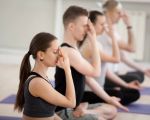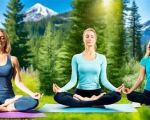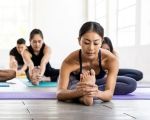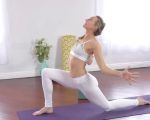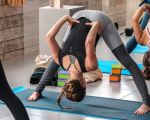- 1-Why-Start-Yoga-Your-First-Steps
- 2-Essential-Yoga-Poses-for-Beginners
- 3-Breathing-Techniques-to-Enhance-Your-Practice
- 4-Common-Mistakes-Beginners-Should-Avoid
- 5-Personal-Experience-From-New-Yoga-Practitioners
- 6-Resources-to-Continue-Learning-and-Improving
Why Start Yoga: Your First Steps
Yoga for beginners is an inviting path to improve physical health, mental clarity, and emotional balance. Starting yoga doesn’t require flexibility or prior experience, only a willingness to learn and stay consistent. Many newcomers find the first step is simply understanding the purpose behind the practice—connecting breath, movement, and mindfulness.
This holistic approach helps reduce stress, increase strength, and promote relaxation, which is why yoga is widely recommended for all ages and lifestyles. Approaching yoga with an open mind and patience is key to making it a rewarding experience.
Essential Yoga Poses for Beginners
Mastering basic poses builds a strong foundation. Start with poses like Mountain Pose (Tadasana), Downward Dog (Adho Mukha Svanasana), and Child’s Pose (Balasana). These poses improve posture, flexibility, and body awareness.
For instance, Mountain Pose helps you find balance and alignment, while Downward Dog strengthens the entire body and calms the mind. Child’s Pose offers gentle stretching and relaxation, perfect for beginners learning to tune into their bodies.
Breathing Techniques to Enhance Your Practice
Yoga for beginners emphasizes breathing control (pranayama) to deepen practice. Techniques such as diaphragmatic breathing and alternate nostril breathing help regulate energy and focus.
Proper breathing supports movement and aids relaxation, reducing tension and promoting mental clarity. Beginners often notice immediate benefits from integrating breathwork alongside physical poses.
Common Mistakes Beginners Should Avoid
New practitioners sometimes rush into advanced poses or neglect proper alignment, which can lead to injury. It’s essential to listen to your body and progress gradually.
Skipping warm-ups or pushing through pain are other common pitfalls. Maintaining consistency, patience, and mindfulness helps build a sustainable yoga routine that respects your individual limits.
Personal Experience From New Yoga Practitioners
Emily, a recent beginner, shares, “Starting yoga felt intimidating, but focusing on foundational poses and breathwork changed everything. I noticed less stress and more energy within weeks. Having a supportive community and guided resources made a big difference.”
Stories like Emily’s demonstrate how yoga for beginners can transform both body and mind when approached with care and enthusiasm.
Resources to Continue Learning and Improving
To deepen your yoga journey, visit Free Yoga Links, where you can find curated classes, tutorials, and tips tailored for beginners. Access to professional guidance and community support makes practicing yoga safer and more enjoyable.
Exploring varied styles and instructors helps you discover what resonates best, fostering growth and commitment in your practice. Embrace the journey one breath and pose at a time.

